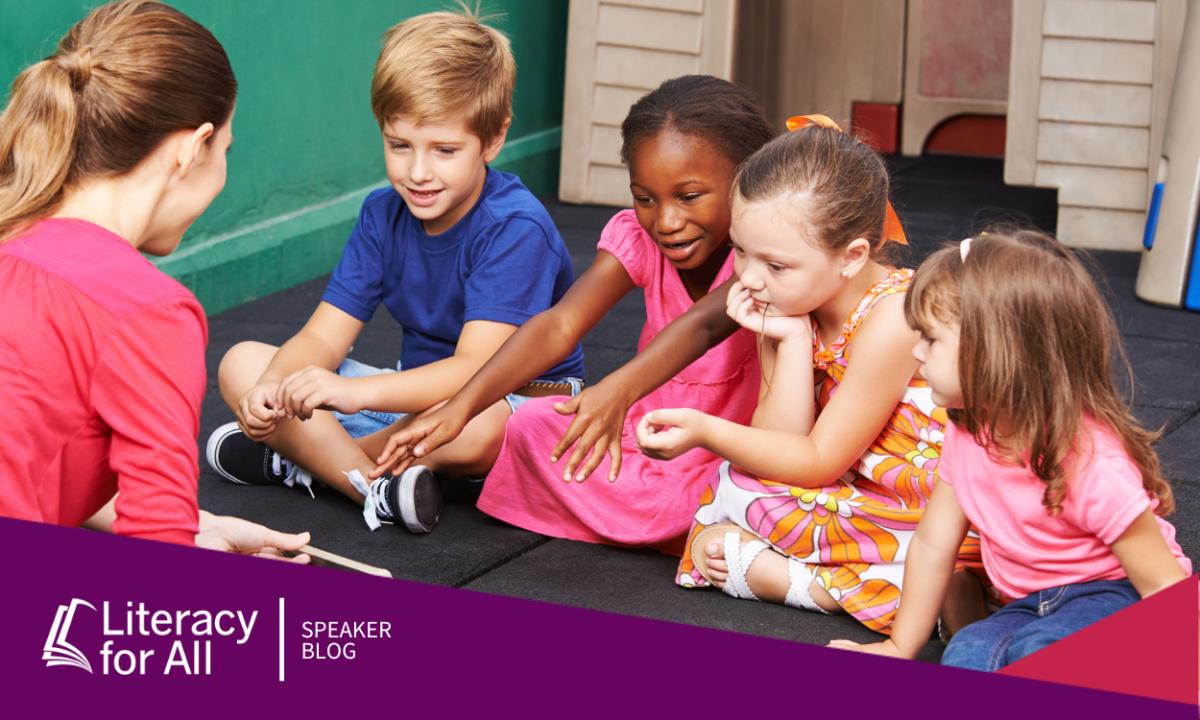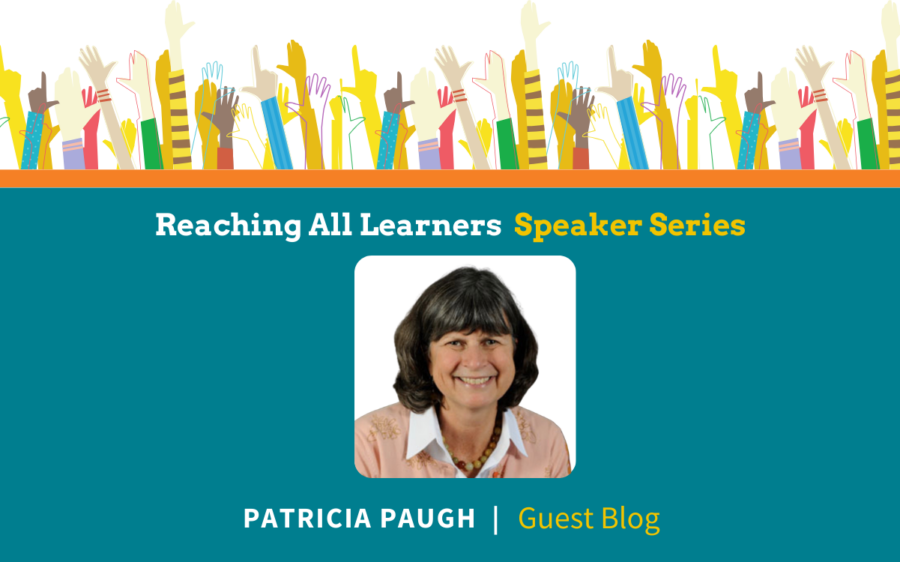What better place to begin an exploration of engaged learning than huddled on a giant checkerboard carpet with twenty-four thoughtful Kindergarteners? The children are elbow deep in a Kinder classic – David Shannon’s No, David! They’d been rolling with laughter over David’s antics, and are now studying an illustration of David, who’s been relegated to a stool in the corner. The group is lingering with Eduardo’s observation that David “… probably has to think on that crazy!”
A quick scan of the carpet reveals students deep in thought – leaning in or up on knees for a better view, their faces scrunched with concern. After a bit of back and forth establishing cause and effect, Mika shares a thought that hints at inner grappling with David’s emotional state.
Mika: He’s going to cry.
Isabelle: No. No. He won’t.
The children are contemplating the likelihood of tears when Abdul, who’s voice rarely emerges whole group, offers a soft, tentative, “I do”.
As their teacher nudges for added thinking, Karina, her eyes glued to Abdul, blurts out, “It’s – him – David – it’s like us!” A bit of disagreement erupts, but Karina persists, “Yeah – ‘cuz some – some – like Abdul, he could get sad like him… It’s real!”
There’s so much to love about this simple snippet of classroom life, the first being just that – it’s so seemingly simple. Yet, what truly captivates and intrigues is the realization that these children are deeply engaged, heart and mind. Their engagement is dialogic in nature; their talk enabling them to wrestle with ideas and with each other as they puzzle through complex human dynamics. Abdul’s soft whisper of solidarity reveals thoughtful self-talk and empathy. Karina’s inquisitive study of Abdul –an attempt to read his face, and in doing so, read his heart – makes visible her efforts to take up his perspective, and in doing so, better understand self, others, and the world. At the core of their process are three reciprocal practices; ways of designing teaching and learning that create conditions for deep engagement. Let’s explore each a bit.
Make thoughtful text choices
Our Kinders’ depth of engagement began with a text that touched the heart and offered the mind something to wrestle with. For this group of children, on this day at this time, No, David! was that text. This simple story of childhood antics was immediately relatable, while the tension between a child’s naughtiness and a loving parent whose patience clearly has limits offered a foothold into exploring and constructing understanding of complex human dynamics.
As I launch into the new school year, No, David! is still in my go-to pile of text options.
But, I constantly re-curate my collection, adding beautiful new texts such as Your Name Is a Song by Jamilah Thompkins-Bigelow and Matt de la Pena’s newest, Patchwork, to ensure all students see themselves, and have opportunity to gain insights into others.
Linger with the ideas in texts
Engaging hearts and minds requires lots of slow. As Thomas Newkirk so wisely advised his readers, “Take your time. Touch the words, and tell me how they touch you.” (2011). Each time I reread these words, I’m reminded of my role in shaping habits and developing cognitive abilities for purposeful slowness with my readers. My read aloud planning focuses on depth of meaning making, as opposed to a-text-a-day pacing. I engage students in thoughtful first reads, lingering in the spots that make us giggle, give us angst, delight, confuse, or tug at the heart. We lean in to think, talk, and savor. Then, we sink into in purposeful rereads, revisiting parts we loved, or the places that still offer potential for added depth.
This process creates a model of thoughtfulness I actively encourage in independent reading, inviting readers to sink into their texts individually and collectively. Students sticky note places to discuss with partners, jotting on the stickies to leave questions or tracks of their thinking for the next reader. They reread with deliberateness, knowing the power of rereading to nudge their thinking further.
Teach into talk
Talk enables students to engage collectively, constructing understandings bigger and bolder than any individual is able to construct alone (Nichols, 2019). My talk goals for students are clear: I want each child to feel seen and heard, to know their voice is valued, and to learn the value of other voices and perspectives in the constructive process.
Compelling texts are by definition those that students can’t help but talk about. Slowing down offers the space for that talk. Once talk is flowing, I listen and observe. Who’s quick to talk, and who’s more contemplative? Whose facial expressions reveal a raging conversation inside the head that doesn’t seem to find its way out? Is the talk helping students actually grow ideas? As I gain a sense of student’s talk personalities, I begin teaching into the talk behaviors that will enable them to construct together, and engage productively with difference (Nichols, 2006, 2019).
Compelling text selection, creating time for slow, and teaching into talk are each powerful practices in in their own right. Woven together, they create conditions and supports for engaging hearts and minds in ways that build depth of meaning making, compassion, and critical process for all students, including our youngest learners.
Professional References:
Newkirk, Thomas. 2011. The Art of Slow Reading: Six Time-Honored Practices for Engagement. Portsmouth, N.H.: Heinemann
Nichols, Maria. 2006. Comprehension Through Conversation: The Power of Purposeful Talk In the Reading Workshop. Portsmouth, N.H.: Heinemann
Nichols, Maria. 2019. Building Bigger Ideas: A Process for Teaching Purposeful Talk. Portsmouth, N.H.: Heinemann
Children’s Books:
de la Pena, Matt. 2022. Patchwork. New York: N.Y.: G.P. Putnam’s Sons Books for Young Readers.
Shannon, David. 1998. No, David!. New York, N.Y.: Blue Sky Press
Thompkins-Bigelow, Jamilah. 2020. Your Name Is a Song. Seattle, WA.: The Innovation Press.

About the Author
Maria Nichols’ work as an educational leader includes 33 years with the San Diego Unified School District, where she served as a Demonstration Teacher, Literacy Coach, and eventually as the Director of School Innovation. Her passion for transformational approaches to teaching and learning powered by the constructive, dynamic nature of talk fuels her efforts with educators, districts and organizations across the U.S. and internationally. Maria honors the innovative capacity of teachers and students alike, and finds immense joy engaging alongside both. Maria is the author of numerous texts and articles focused on engaging students through talk, including Comprehension Through Conversation: The Power of Purposeful Talk in the Reading Workshop (Heinemann, 2006), “Real Talk, Real Teaching” (Ed Leadership, November 2014), and most recently, Building Bigger Ideas: A Process For Teaching Purposeful Talk (Heinemann, 2019).





